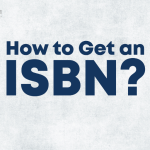Leadership is a dynamic and intricate skill, demanding a customised and nuanced strategy. Delving into the realm of writing a leadership book necessitates a thoughtful approach, ensuring that your insights are not only enlightening but also distinctively attuned to your objectives. This blog post will guide you through essential steps, enabling you to craft a leadership book that distinguishes itself, captures your audience’s attention, and conveys your unique stance on leadership.
Consider the example of renowned leadership author Simon Sinek, whose book “Start With Why” explores the significance of purpose-driven leadership. Sinek’s purpose is evident from the title, emphasising the importance of understanding why we lead and how it impacts our effectiveness. This clarity of purpose resonates throughout his book, making it a standout in the leadership genre.
Read: How to Self-Publish an eBook and Sell It Online: A Comprehensive Guide
Another illustration is Sheryl Sandberg and Nell Scovell’s “Lean In,” which addresses women in leadership. Sandberg’s purpose is to empower women to pursue leadership roles unapologetically. Her book stands out by combining personal anecdotes, research, and practical advice tailored to the challenges faced by women in the professional world.
In the subsequent sections, we’ll delve into key steps, such as defining your purpose and understanding your audience, to assist you in creating a leadership book that not only imparts valuable knowledge but also leaves a lasting impact by being uniquely yours.
- Define Your Purpose
- Know Your Audience
- Develop Your Unique Leadership Model
- Share Personal Stories and Anecdotes
- Provide Practical Advice and Actionable Strategies
Define Your Purpose
It is essential to have a clear grasp of your objective before going on the process of creating a leadership book. Consider why you want to share your leadership ideas and what inspires you to do so. Your objective will guide your writing and serve as the foundation for the entire book.
For example, if your leadership experience has been moulded by overcoming big problems in your profession, your goal may be to inspire and advise others who are facing similar issues. Your book might be about perseverance, flexibility, and turning misfortune into opportunity. By identifying your objective, you create a unified subject that appeals to readers looking for inspiration and practical guidance.
Another example could be a leadership book based on your professional expertise, such as successful entrepreneurship. Your purpose might be to share proven strategies, lessons learned, and insights that can help aspiring entrepreneurs navigate the complexities of building and leading a successful startup. This purpose guides your content, ensuring it’s informative and valuable to your target audience.
You may also read: Positive Character Traits And Why They Are Crucial
Know Your Audience
Understanding your target is critical for writing a book that truly resonates with readers. The tone, phrasing, and examples you employ throughout the book are determined by your audience. Consider industries, age groups, and professional backgrounds.
If your target audience is made up of young professionals in the IT field, for example, your examples and case studies should be relevant to their experiences. It would be useful to discuss creative leadership styles, the influence of technology on leadership, and new trends in the tech sector. If, on the other hand, your target audience consists of seasoned executives in established businesses, your book may go into proven leadership concepts, navigating organisational structures, and tackling difficulties specific to established corporate settings.
By tailoring your content to resonate with your audience’s specific needs and interests, you ensure that your leadership book speaks directly to the individuals you aim to inspire or guide. This targeted approach enhances the book’s relatability and value, making it more likely to have a meaningful impact on your readers.
Develop Your Unique Leadership Model
To set your leadership book apart, develop a distinctive leadership model that encapsulates your philosophy and approach. Differentiate your book by presenting a unique leadership model or framework. Share your perspectives on key leadership principles, communication styles, or decision-making processes. Draw from your experiences, successes, and even failures to create a model that reflects your distinctive approach to leadership. Ground your concepts in real-world examples to make them practical and applicable.
An exemplary instance is Stephen R. Covey’s “The 7 Habits of Highly Effective People.” Covey introduced a model based on principles such as proactivity, prioritization, and synergizing. His model became widely acclaimed, as it offered a comprehensive framework for personal and professional effectiveness. Similarly, your unique model could encompass innovative strategies, emphasizing the aspects of leadership that resonate most with you. This model becomes the backbone of your book, guiding readers through a structured and personalized approach to leadership.
You may also read: Top 10 Tony Robbins Books That Inspire Success and Change
Share Personal Stories and Anecdotes
Infuse your leadership book with authenticity by sharing personal stories and anecdotes. Readers connect with authenticity. Integrate personal stories and anecdotes to humanize your leadership journey. These narratives provide a window into your experiences, making your teachings more relatable and memorable. Whether it’s a challenging decision you faced, a transformative moment, or a mentorship encounter, personal stories create a stronger emotional impact.
Brene Brown’s “Dare to Lead” is an excellent example. Brown intertwines her research findings with personal stories, creating a narrative that feels genuine and relatable. By recounting her own leadership challenges and vulnerabilities, Brown establishes a connection with readers, making her teachings more impactful. Your personal stories could include instances where your leadership skills were put to the test, the lessons you learned from setbacks, or the pivotal moments that shaped your leadership philosophy. By incorporating these narratives, you not only make your book more engaging but also provide readers with practical insights derived from real-world experiences. This personal touch enhances the credibility of your teachings and fosters a deeper connection with your audience.
Provide Practical Advice and Actionable Strategies
The essence of a compelling leadership book lies in its ability to offer practical guidance that readers can readily apply. Simon Sinek’s “Start with Why” is a prime example. Sinek doesn’t merely discuss the importance of understanding one’s purpose; he provides a tangible framework for discovering and communicating the ‘why’ behind actions. Through exercises like the Golden Circle, Sinek offers actionable strategies that leaders can immediately implement to inspire change within their organizations. When writing your book, ensure you go beyond theoretical discussions and offer concrete tools and exercises. Break down complex leadership principles into actionable steps, enabling readers to translate your advice into real-world practices. This hands-on approach enhances the utility of your book, making it a valuable resource for aspiring and established leaders alike.
For instance, if your leadership model emphasizes effective communication, provide practical tips on active listening, delivering constructive feedback, or fostering a culture of open communication within teams. By incorporating actionable strategies, your book becomes a toolkit for leadership development, allowing readers to actively engage with and implement the lessons you impart. This practical focus distinguishes your book from theoretical treatises, catering to readers who seek not only knowledge but also tangible tools for leadership success.
Read: Here’s a List of 5 Easy Steps to Go from Writer to Published Author
Writing a leadership book unique to your purpose requires a thoughtful blend of personal experience, tailored advice, and a clear understanding of your audience. By defining your purpose, knowing your audience, developing a unique leadership model, sharing personal stories, and providing practical advice, you can create a book that not only stands out in the crowded leadership genre but also makes a meaningful impact on your readers’ leadership journey. Remember, authenticity and a genuine commitment to your purpose will set your book apart and resonate with those seeking guidance in the realm of leadership.
Publish your book with BlueRoseONE and become a bestselling author. Don’t let your dream of becoming an author fade away, grab the opportunity now and publish your book – be it fiction, non fiction, poetry or more.
















